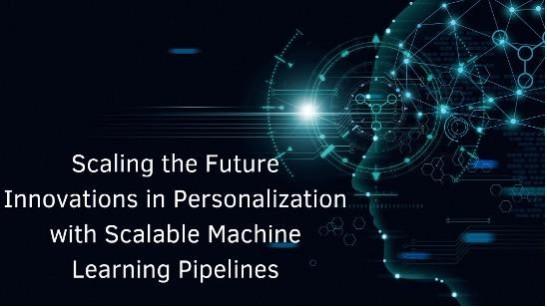
In a rapidly evolving digital landscape, Ramachandra Vamsi Krishna Nalam, with co-authors Pooja Sri Nalam and Sruthi Anuvalasetty, has pioneered advancements in machine learning pipelines for large-scale personalization. Their work sets new performance benchmarks, blending technical precision with visionary execution. This blueprint for innovation reimagines personalized digital experiences, showcasing the potential for seamless, transformative solutions in the future.
A Leap Forward in Personalization Systems
Modern personalization systems have evolved dramatically, from rudimentary rule-based engines to sophisticated machine learning pipelines. Today's systems process vast amounts of data—up to 300 million events hourly—while maintaining response times under 200 milliseconds. These advancements ensure unparalleled user engagement, boosting clicks-through and conversion rates by over 30%.
Architectural Brilliance: Hybrid Innovations
One of the groundbreaking innovations presented is the hybrid architecture that fuses real-time feature computation with intelligent caching mechanisms. This dual approach achieves a remarkable balance, maintaining sub-100 millisecond latencies during peak loads while reducing resource utilization by 40%. This ensures scalability up to millions of concurrent users with minimal infrastructure overhead.
Real-Time Feature Engineering: The Game Changer
Feature engineering, often the backbone of machine learning systems, has witnessed transformative upgrades. Contemporary systems manage and compute up to 75 unique data points per user in real-time, adapting dynamically to behavioral changes within 150 milliseconds of interaction. This dynamic responsiveness ensures that users receive personalized content tailored to their immediate preferences.
Efficiency through Distributed Processing
The evolution of distributed processing capabilities has transformed the scalability and responsiveness of large-scale systems. Modern platforms efficiently manage up to 5 million concurrent users, ensuring seamless operation even under peak traffic conditions. Advanced architectures enable model updates to be processed in under 100 milliseconds, maintaining real-time adaptability and accuracy. This rapid processing supports hyper-personalized experiences, delivering tailored recommendations and interactions without compromising performance. By balancing high throughput with low latency, these systems excel in handling complex computational tasks, ensuring users receive consistent, high-quality service. Such advancements are crucial in meeting the dynamic demands of today's data-driven, user-focused digital landscape.
Privacy and Security at Scale
As personalization systems expand, safeguarding user data becomes increasingly critical. Technologies such as differential privacy, which adds statistical noise to data, and homomorphic encryption, enabling computations on encrypted data, are revolutionizing security standards. Additionally, real-time encryption layers ensure data is continuously protected during processing and transmission. These cutting-edge, privacy-preserving techniques not only fortify defenses against breaches but also enable systems to comply with stringent data protection regulations like GDPR and CCPA. By maintaining high performance and user trust, these innovations strike a vital balance between functionality and privacy, paving the way for secure, user-centric personalization in an increasingly data-driven world.
Paving the Way for Future Technologies
The future of personalization systems is set to be revolutionized by the integration of quantum computing and edge technologies. Quantum-inspired algorithms have already showcased remarkable potential, cutting computational complexity by up to 80%, which not only accelerates processing but also optimizes resource use. Simultaneously, edge computing enhances efficiency by enabling localized data processing and minimizing latency, ensuring real-time, responsive user experiences. This combination not only boosts performance but also aligns with global sustainability efforts by significantly reducing energy consumption. Together, quantum and edge innovations promise a paradigm shift, delivering smarter, faster, and more eco-friendly personalization solutions tailored to evolving user needs.
In conclusion, Ramachandra Vamsi Krishna Nalam, along with his co-authors, has demonstrated the transformative potential of scalable machine learning pipelines in revolutionizing personalization systems. These innovations not only improve system performance but also emphasize ethical alignment, security, and sustainability. Looking ahead, their work offers a valuable roadmap for integrating technical excellence with the evolving demands of users in an ever-changing digital landscape.

















